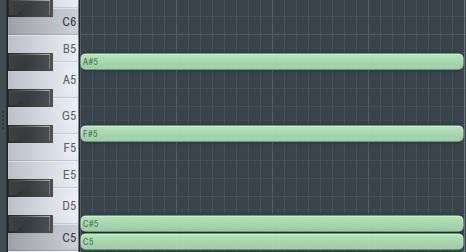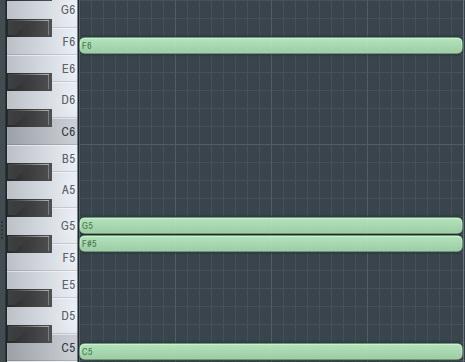Search the Community
Showing results for tags 'intervals'.
-
Good hour good folks! This is a very very crucial question for me, so thank you in advance. I went ahead and tested the interval ranking (list of intervals from most consonant to dissonant in form of ratios) by building a chord with the 3 most dissonant intervals within the ranking which are Tritone - ratio (23:16) Minor 2nd - ratio (15:16) Minor 7th - ratio (9:16) Image Description (Root to tritone - root to minor 2nd - root to minor 7th.) As seen in the image above, according to the interval ranking there is no chord more dissonant than this. Now, the testing.. In the image above, if i were to take the Minor 7th interval (A#) and reposition it to the note (D), the chord will have now become significantly more dissonant than in it's original position. This would disprove that my use of the interval ranking was correct, as the chord is now more dissonant. Maybe.. i positioned the most dissonant intervals all relative to the root as opposed to placing them relative to the note below each successive interval, so lets visualize this updated structure below. Image Description (Root to tritone - tritone to minor 2nd - minor 2nd to minor 7th.) As seen in the image above, the intervals are now structured not relative to the root but by consecutive notes. Again, the testing.. In the image above, If i again, take the minor 7th (F) and reposition it to (G#), the chord is now more dissonant than in its original "supposedly max dissonance" chord structure shown above. ---------------------------------------------------------------------------------------------------------------------------------------------------------------------------- "Question Section" Question 1. In my second image example, did i utilize the interval ranking adequately? When stacking intervals, do you use intervals based off the note before the successor note or do you stack intervals all relative solely to the root? Question 2. In my second image example, i used the most dissonant intervals available within the interval ranking but yet when i shifted the minor 7th (F) and re-positioned it to (G#), the chord was more dissonant. So my 2nd approach to stacking intervals still doesn't prove to work effectively. What is the process behind this and how should intervals be stacked in a chord? Question 3. If we reference the second image and and focus on the F# and G notes right beside each other, they're pretty dissonant. If i push the G up or down an octave and leave the F# where it is, now they aren't as dissonant. Is the reason for this because when the two notes are beside each other in the same octave, their waves are both traveling at a similar rate but when one note is brought up an octave, because the frequency of that note has been doubled, now the two notes waves line up more as the higher octave note is now traveling twice as fast as the note an octave below? Question 4. If i stack intervals as explained in my second image example, which is by selecting my desired interval ratios relative to the note previous to it in my chord as opposed to the root, do the successive notes after my new note play a direct role "interval relationship wise" with the previous notes or does it just boil down to the note before the new note? Let me elaborate.. If i have C and E (Major 3rd) and then add a G on top of that, the C to E is a Major 3rd and the E to G is Minor 3rd. But in that chord structure the C to G could be considered a Perfect 5th and now the G is no longer a Minor 3rd interval within the chord. Which is right and which is wrong? Especially when more notes are added, the intervals can have multiple perspectives. So the questions boils down to, do we only focus intervals relative to the note before the new note added? If not, it would be a mess. Thank you very much guys!
-
I experiment with embodiment of fragments of different music works by proposed by me new structure of musical note (http://www.youngcomposers.com/forum/t33636/the-new-structure-of-muscal-note/). I can by it to apply pitches from 24 TET Scale freely. Because of that I took the interest to Arabic music works. In particular I experimented with work of Ahmed Abdul Malik "Farah Alaiyna". I observed that the composer introduced micro tonal notes from 24 TET scale mostly in final cadences in oder to obtain to receive quatertone interval between 2 last notes of melody. It is interesting how useful may be analogous apply of microtonal notes in occidental music. I presented below 2 variants of the work's mp3 files which correspond its first 8 measures which include final cadence in 8 bar. First variant has in final cadence quartertone melody interval and second- common haftone one. I myself doesn't feel essential difference. For some reason the second mp3 file isn't upoaded .I try that later. If nothing came again from the try to upload mp3 file there is link: http://home.arcor.de/yuri.vilenkin/fara-10sept-5-micro.mp3 Greetings Yuri Vilenkin fara-10sept-5.mp3
- 2 replies
-
- oiental music
- cadences
-
(and 2 more)
Tagged with:



